5.06.18
My Favorite Vietnamese Spice: Cinnamon Pecan Bundt Cake
After tasting four varieties of ground cinnamon from Penzeys, an on-line spice company, their Vietnamese variety was an easy pick as my favorite, then as well as now, for this Cinnamon Pecan Bundt Cake. At the restaurant where I worked at that time, we chose to go with this brand when we were looking for spices with distinctive flavor to replace the brown sawdust in plastic jars that the wholesale distributors were peddling. You can pretty much tell when a restaurant or bakery is using cheap ingredients—lack of flavor every time—and since we used a lot of spices in the bakeshop, we didn’t want that reputation, even though the price was a little more.
This popular spice is no doubt here to stay, in our cinnamon rolls, sticky buns, bundt cakes, and many other good things. But where does it come from and does origin matter? It is produced from the bark of different species of evergreen trees in Southeast Asia. The outer bark is stripped off, then the interior layer of the bark—this is the cinnamon—is shaved off in strips, and as they dry, roll into quills that are ground into powder or sold as sticks. As for origin and why it matters, there are four major areas of production in Asia, each location known for its own unique taste and other characteristics, such as volatile oils, the source of most of the flavor.
The Four kinds of Cinnamon are defined by place of origin:
1. Indonesia Korintje Cinnamon—When you buy cinnamon at the supermarket, this is probably the variety that you are getting, even though it isn’t on the label. It is very fragrant, with a mellow, sweet flavor, the way you remember cinnamon as a kid. It’s the same strength as China, but smoother, and not as sharp. If you want something to shake straight out of the shaker, this is the one. Or, it makes great cinnamon sugar.
2. Ceylon Cinnamon from Sri Lanka—This is the preferred variety in both England and Mexico. With a complex citrusy flavor and lacking any bite at all, it is a favorite in both places. If you are making Mexican food, this is the one.
3. China Cinnamon—Spicy, sweet, and extra strong; this variety is good for anything from apple pie to Christmas cookies.
4. Vietnamese Cinnamon—The strongest of them all, plus rich, sweet, and spicy hot. It’s my favorite, but you should know that I like hot spicy food as well. This is one of two varieties, along with Korintje, that I use the most. The same was true in the restaurant. Vietnamese is what I chose to use in this Cinnamon Pecan Bundt Cake.
Where to find Specialty Cinnamon Varieties:
Although the ground cinnamon at the supermarket is not usually labeled with place of origin, it’s fine to use in this recipe. But if you want to perk up the flavor of your baked goods and venture into specialty varieties, which I recommend, here’s some places where you can find them:
- Penzeys—This is where I order my spices. What I suggest is this: the first time , if you order, get the spices in the 1.7-ounce (1/2 cup jars). After that, order in the small plastic bags, for refills. Keep these in the freezer for freshness.
- King Arthur—The Vietnamese Cinnamon is available here in a 3-ounce jar.
- Local specialty food stores—such as Fresh Market, where I have seen Korintje, Ceylon, and Saigon (this is what the Vietnamese variety is sometimes called). Also, Whole Foods carries these specialty cinnamons, labeled with their 365 brand. Check your local stores for availability.
- Costco—Although they have Vietnamese, and maybe others, their jars are more restaurant-size (pack of 2 – 10.7 oz jars) rather that home-size. I don’t advocate buying this quantity, but if you do, store in freezer to keep fresh.
- Amazon—Penzeys, King Arthur, Costco, and Whole Foods 365 brand can all be found here, if it’s more convenient.
How to fill a bundt pan:
In this recipe, the cake batter is layered into a bundt pan with a cinnamon-pecan filling, like a coffee cake. Alternate two layers of batter, and two layers of filling, starting in the bottom of the pan with the batter, then pecan filling, more batter, ending with a layer of the filling (pressed into the batter). This will become the bottom of the cake when inverted. I like to scale the batter and the filling (see recipe for amounts), but if you would rather “eyeball” the layers, that’s ok too. After it cools, drizzle with luscious, silky Bundt Cake Icing.
Options for pans:
If you don’t have a small 6-cup bundt pan, the cake can be baked in a 7″ (17.5 cm) diameter springform pan. When baked this way, you can call it a coffee cake. Since I only have one bundt pan, I bake one of each and freeze one for later. Ironically, but convenient, these two pans hold the same amount. Or, you can use the whole recipe, instead of dividing it into two portions for two cakes, and bake one large 12/15-cup bundt cake.
Filling a Springform pan:
Use same layering technique and amounts as the bundt pan above. See Recipe for exact quantities.
Finished Bundt Cakes:
Serve with Cinnamon Syrup and extra toasted pecans.
Finished Coffee Cakes:
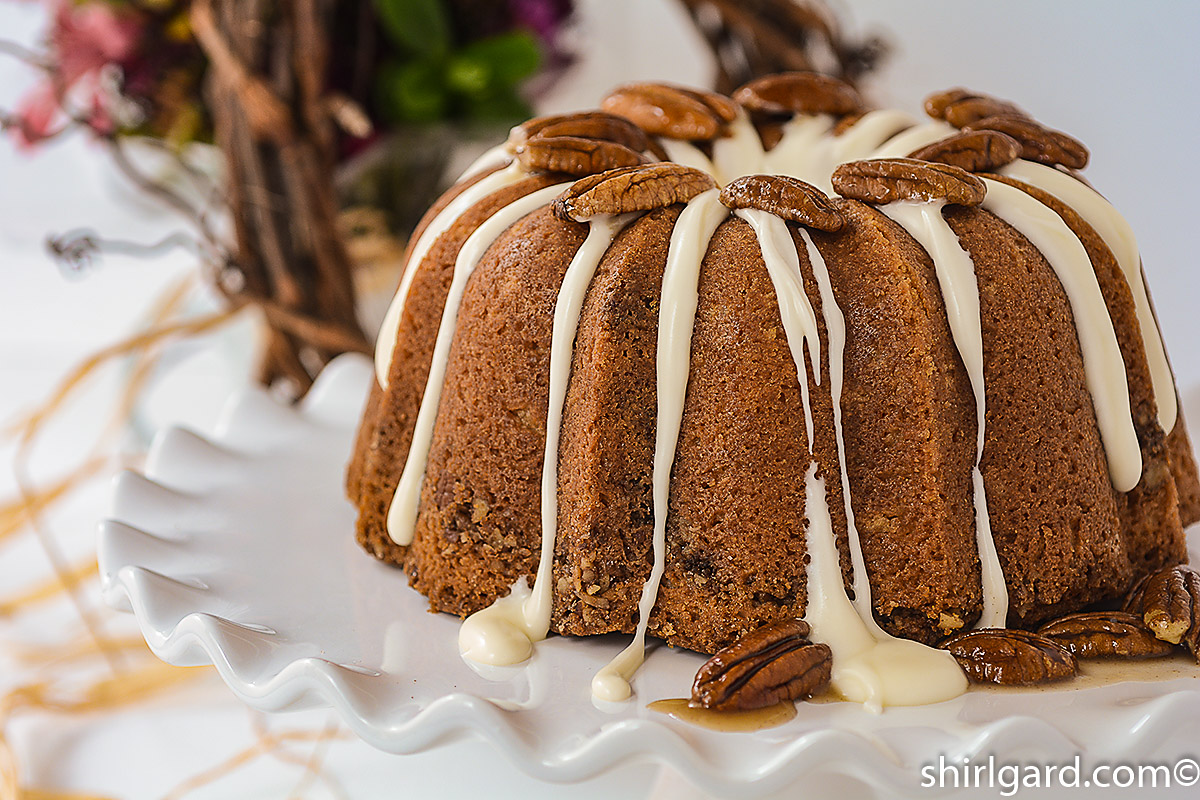
Cinnamon Pecan Bundt Cake
YIELD: NET WEIGHT OF BATTER + NUTS = 1800g (4 lb)
TWO SMALL BUNDT PANS - 7" (17.5 cm) / 6 CUP (1.5 lt) SCALED @ 900g (2 lb) EACH
OR: ONE SMALL BUNDT PAN & ONE 7" (17.5 CM) SPRINGFORM PAN, SCALED AT 900g (2#) EACH
OR: ONE LARGE BUNDT PAN 10" - (25 cm) / 12-15 CUP (2.5-3.75 lt) SCALED @ 1800g (4 lb)
Ingredients
- NUT LAYER:
- 300 grams pecans toasted (2 1/2 cups)
- 80 grams granulated sugar 1/3 cup + 1 Tablespoon
- 60 grams dark brown sugar packed (1/3 cup)
- 1/2 teaspoon Vietnamese cinnamon
- BATTER:
- 360 grams sour cream 1 1/2 cups
- 1 teaspoon baking soda
- 210 grams unbleached all-purpose flour (King Arthur) (1 1/2 cups)
- 180 grams unbleached cake flour (King Arthur) (1 1/3 cups)
- 10 grams baking powder 2 teaspoons
- 1 teaspoon fine sea salt
- 225 grams butter slightly firm (2 sticks / 8 oz)
- 350 grams granulated sugar 1 3/4 cups
- 150 grams whole eggs 3 large
- 1 teaspoon vanilla extract
- 1925 grams = Total 68 oz 4# 4 oz
- BUNDT CAKE ICING: For Two Cakes
- 120 grams heavy cream chilled (1/2 cup)
- 360 grams powdered sugar sifted (3 cups)
- 1/2 teaspoon vanilla extract
TOASTED PECAN HALVES FOR GARNISH- CINNAMON SYRUP: Separate recipe
Instructions
- PREP PANS: Spray generously with non-stick spray with flour, such as Pam or Baker's Joy, making sure to get into all the crevices.
- MAKE NUT MIXTURE: Process pecans, sugar, and cinnamon in food processor: pulse until the nuts are chopped medium fine.
- MIX BATTER: Mix sour cream and soda in a mixing bowl and let stand at room temperature for 1 hour.
- PRE-HEAT oven to 325° F (165° C).
- SIFT flour, baking powder, and salt together. Whisk to blend.
- CUT the butter into 1" cubes and place in mixer bowl. Using the paddle, mix on medium speed until smooth and lightened in color, about 2 minutes. Add the sugar gradually. Continue beating 3 minutes.
- WHISK the eggs with the vanilla. Add to the bowl, a little at a time, beating for 1 minutes after each addition. Scrape down the bowl as needed.
- REDUCE mixer speed to low. Add the flour mixture (in 3 parts) alternately with the sour cream (in 2 parts), beginning and ending with the flour, mixing just until blended after each addition. Scrape down sides of bowl and scrape up bottom of bowl. Mix in.
- SCALE batter and nut mixture into each pan as follows, spreading each layer evenly in the pan: Double these quantities if using a large bundt pan. 1st layer: 350 grams batter, 2nd layer: 100 grams of nut mixture, 3rd layer: 350 grams batter, 4th layer: 100 grams of nut mixture (this will be the bottom of the cake when inverted). When adding the nut layers, press gently into batter. Total = 900 grams (2#)
- BAKE on two parchment-lined quarter sheet pans @ 325° F (165° C) 45-50 minutes, until a skewer tests clean. Large cakes will take longer.
- COOL on sheet pans for 15-20 minutes. Carefully invert the cakes onto cake boards or platters.
- BUNDT CAKE ICING: MAKE the icing while the cakes bake. Whisk cold cream into powdered sugar, beating until the mixture is smooth and glossy. Add vanilla. Adjust consistency, as desired, with more cream, or more sugar, to make a thick icing that flows easily from a spoon.
- DRIZZLE icing on cool cakes; it looks nice running down the crevices.
- REST the cakes to let icing firm up.
- CUT into wedges and serve with Cinnamon Syrup, (separate recipe) if desired.
Notes

Thanks for stopping by. Enjoy!
Shirl
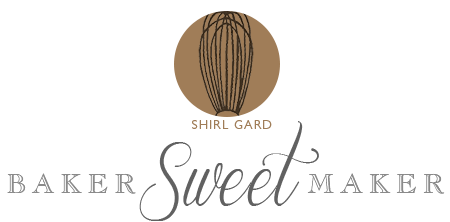
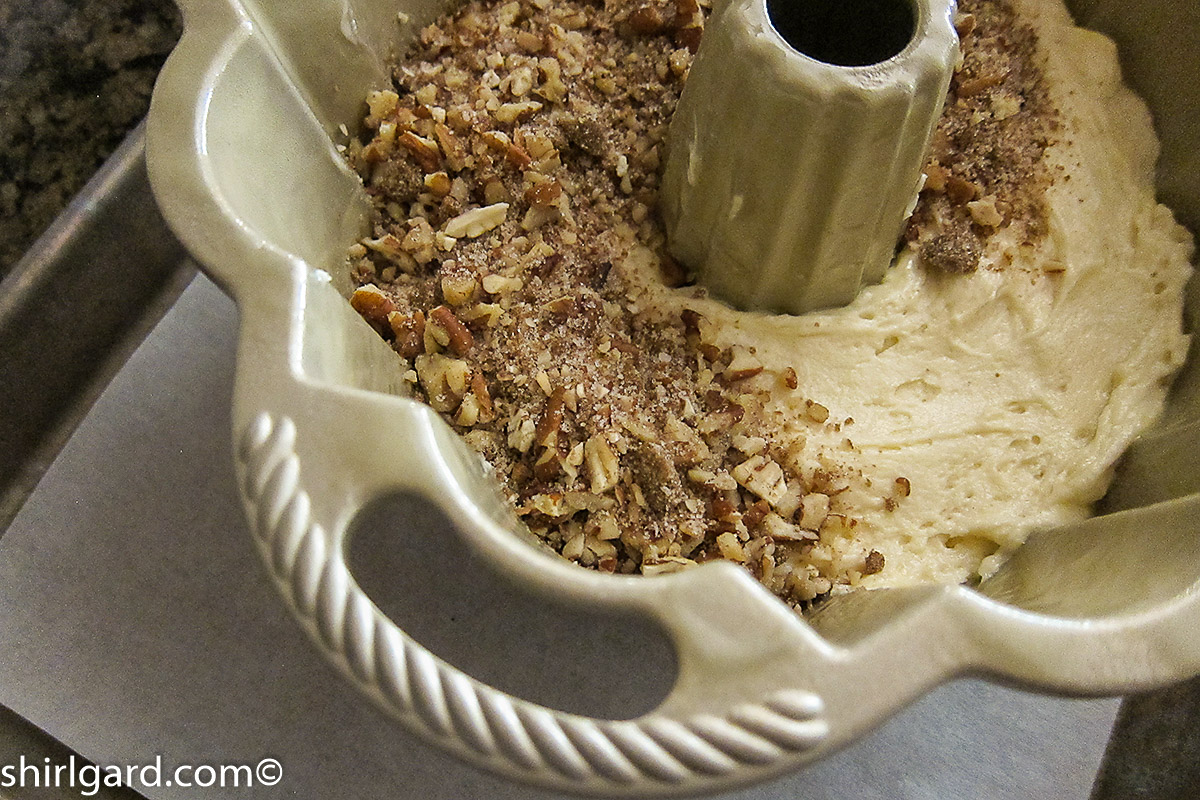
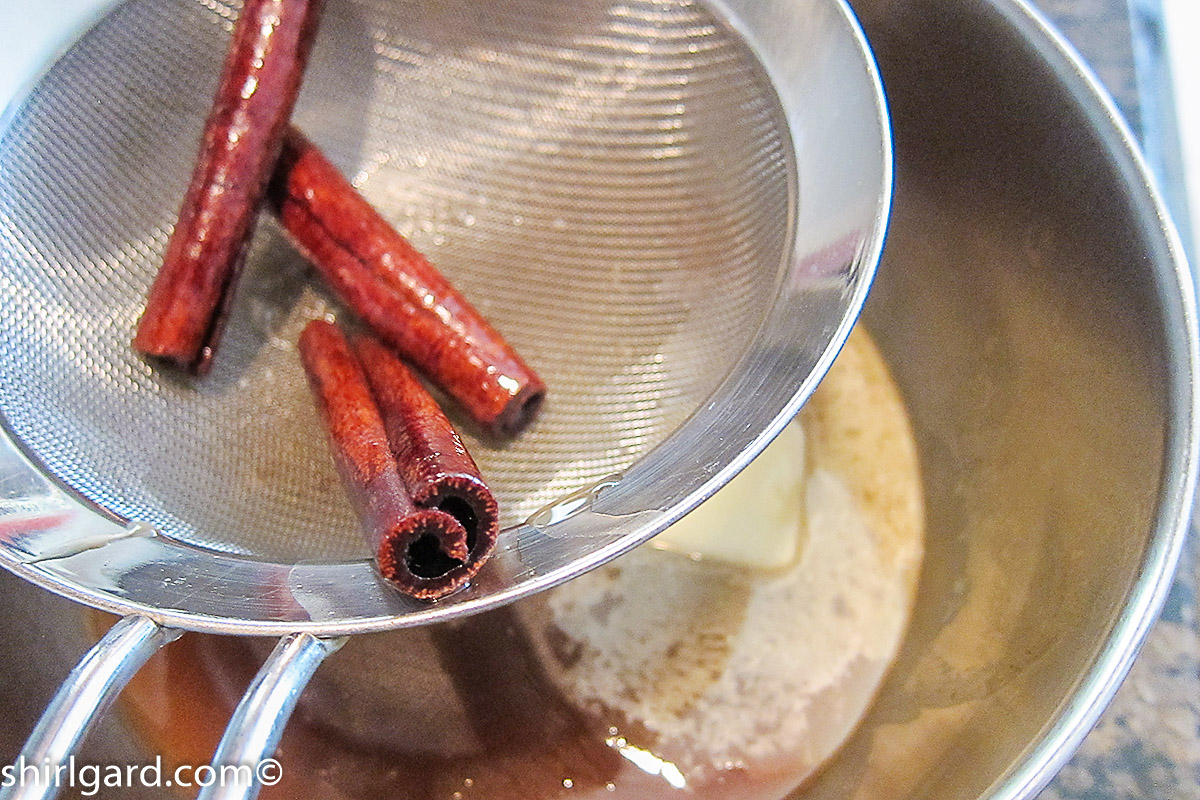
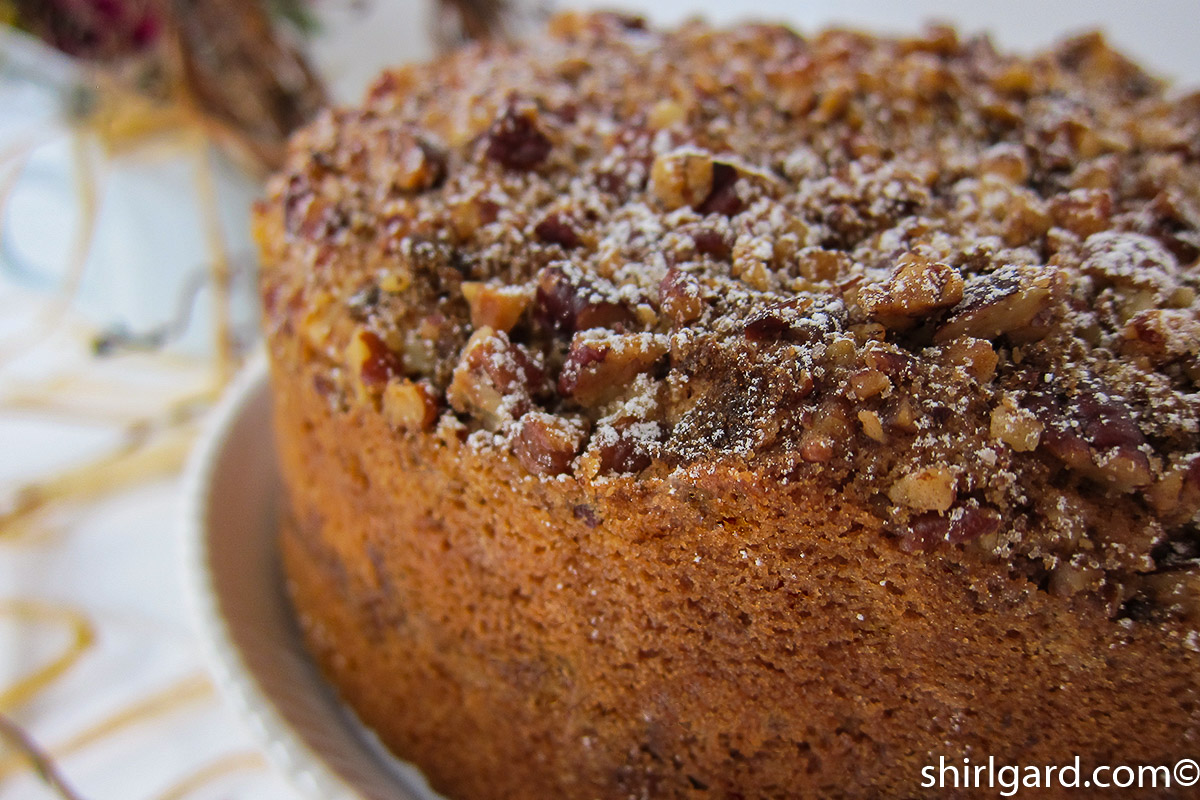
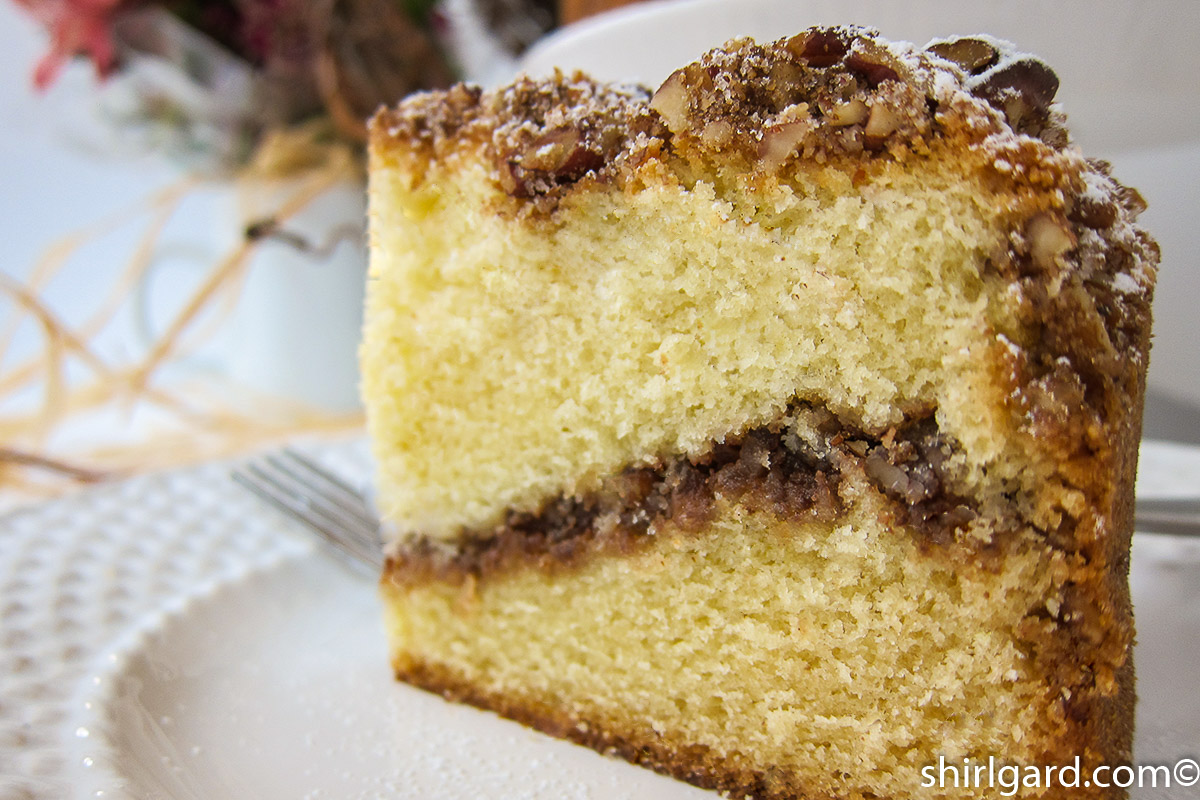
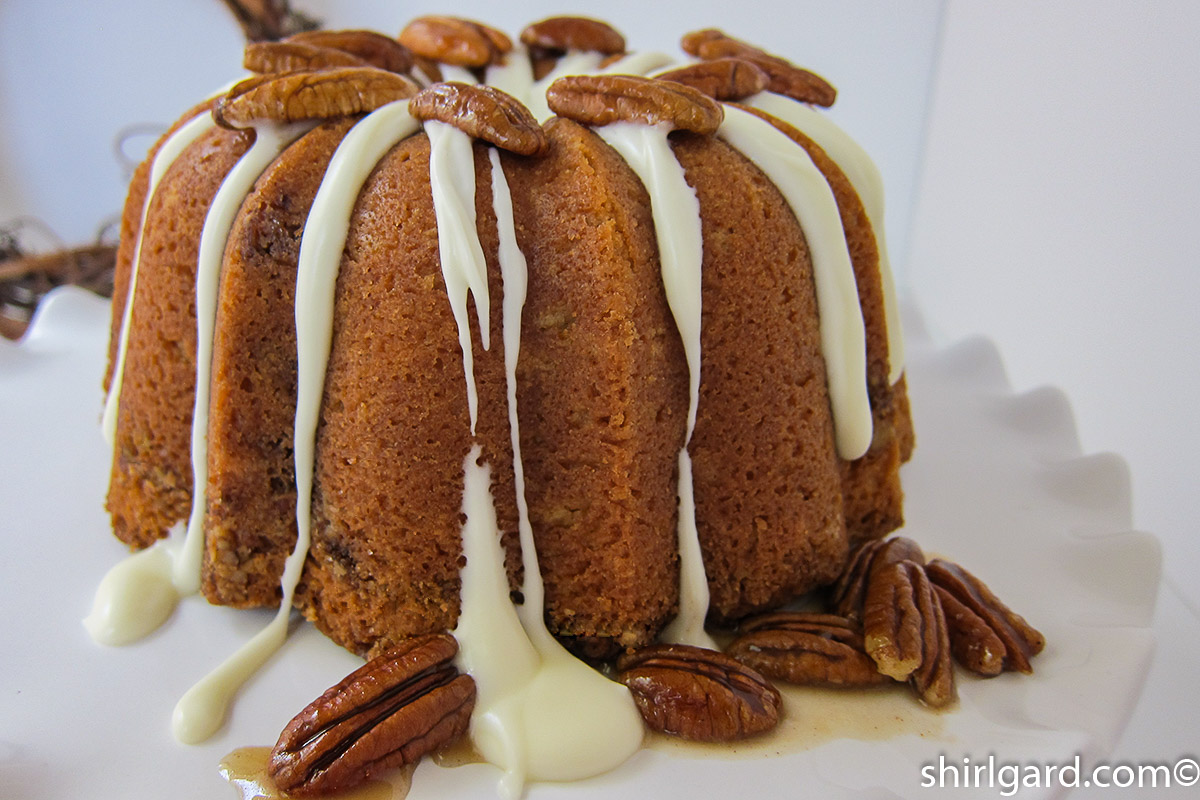
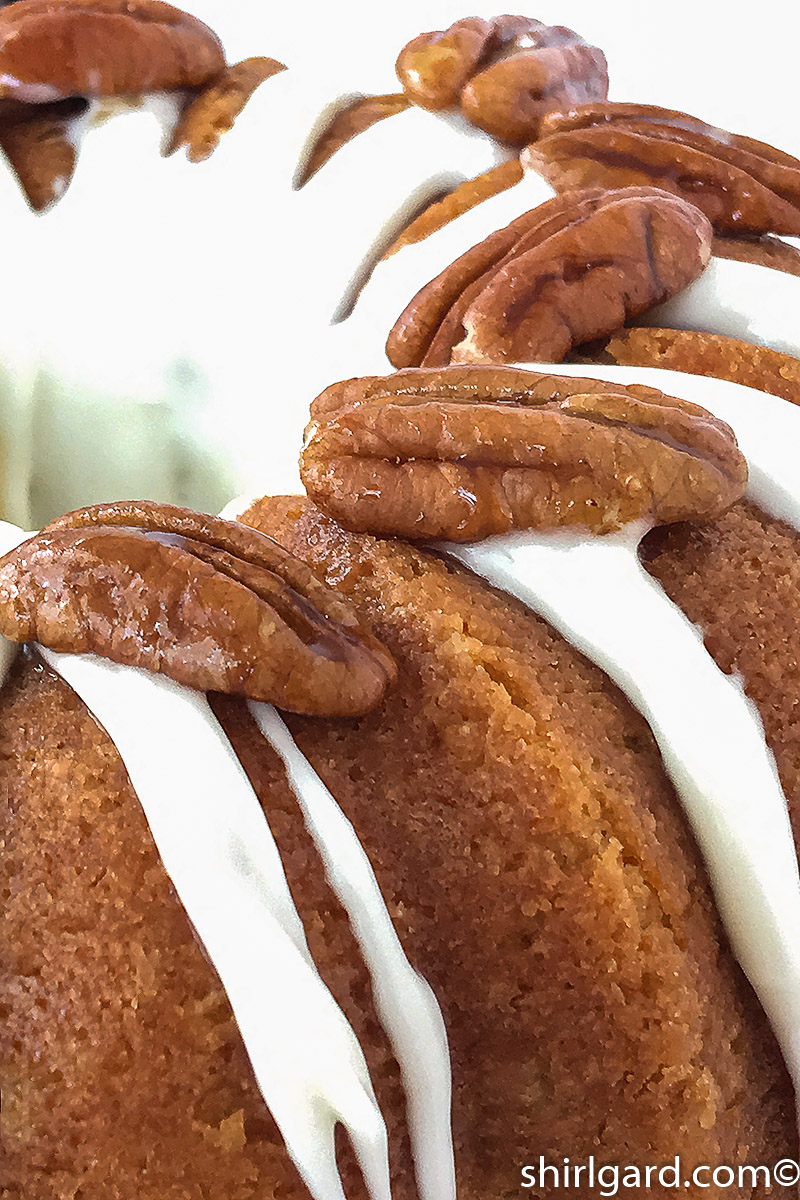
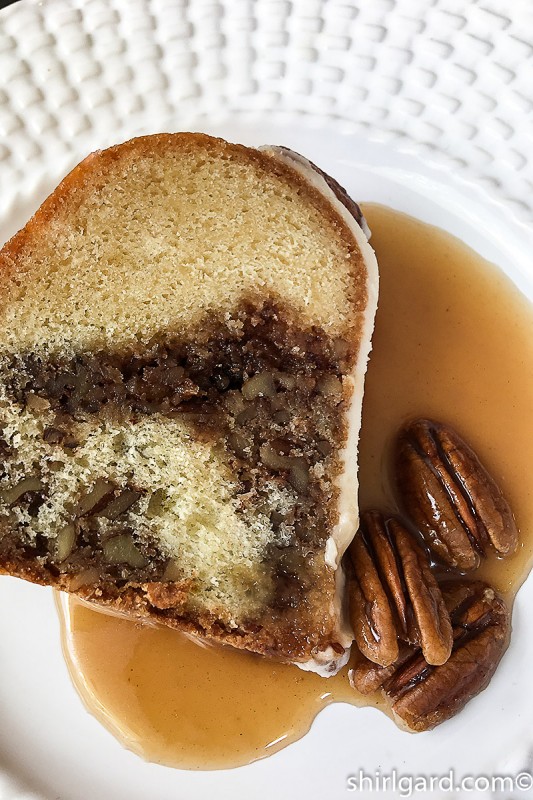
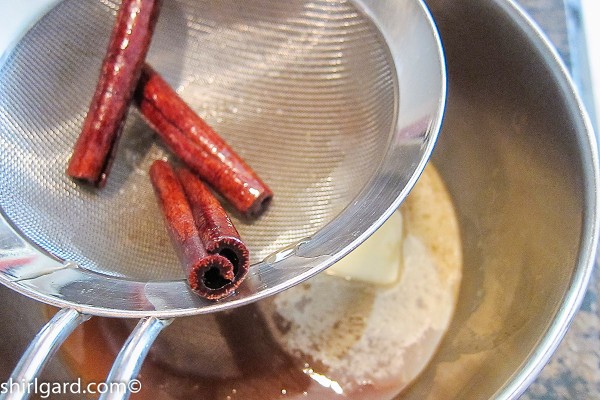
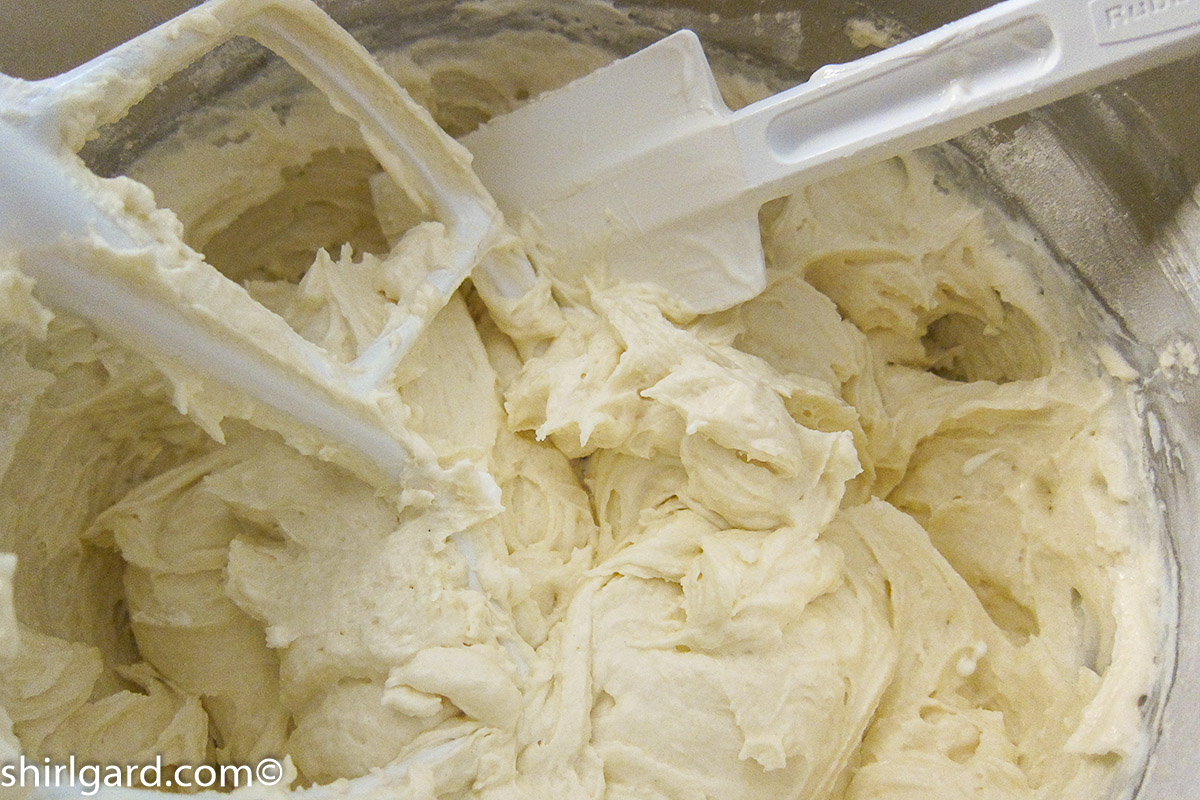
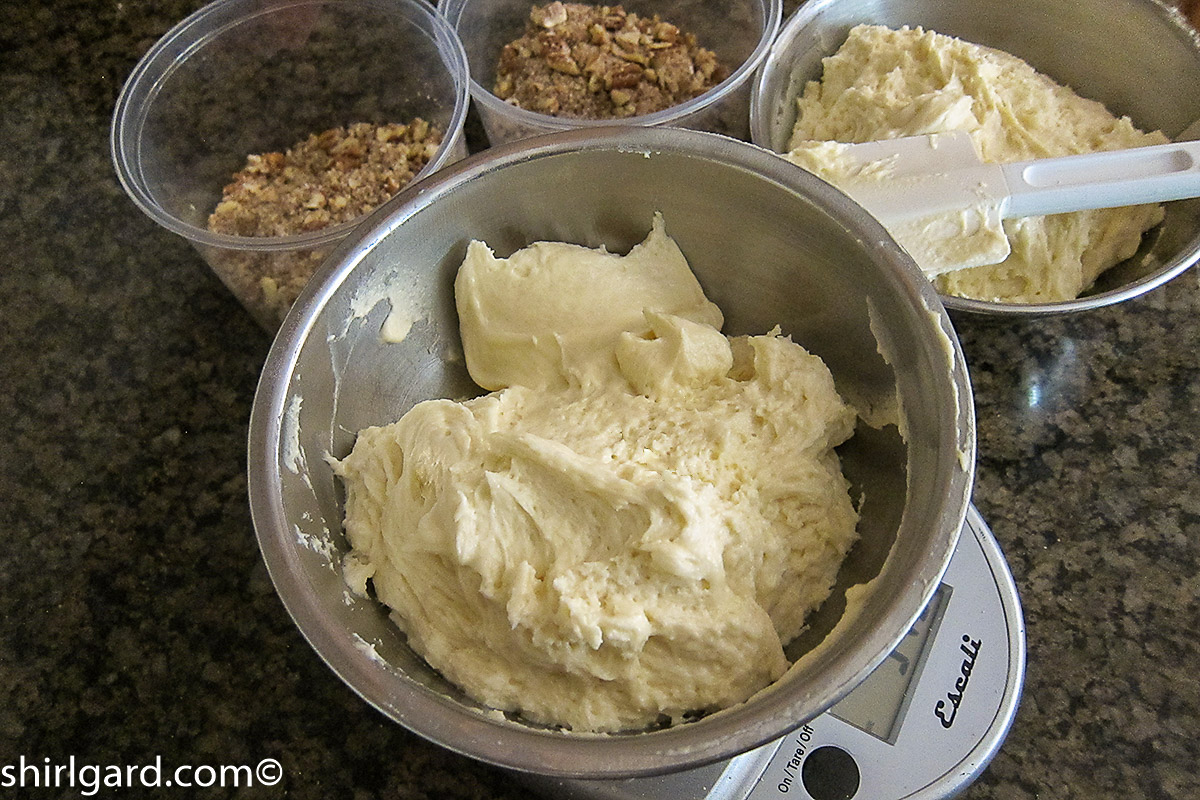
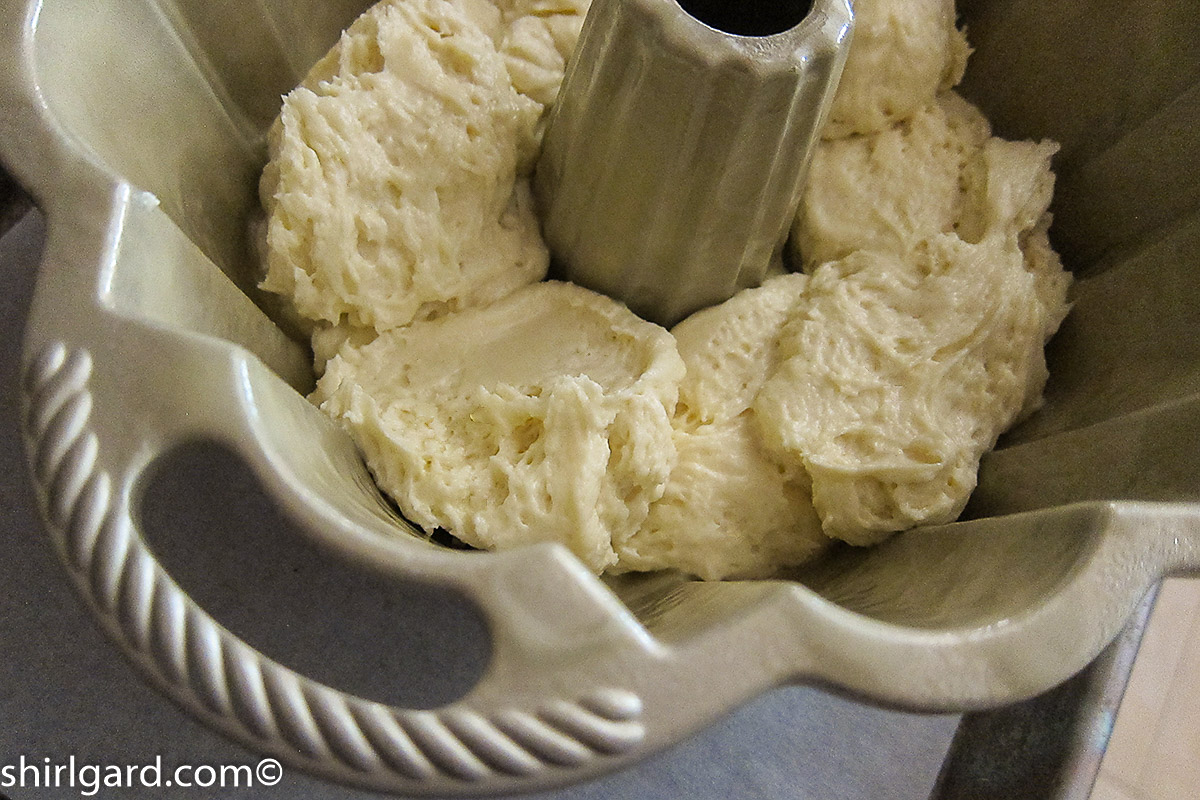
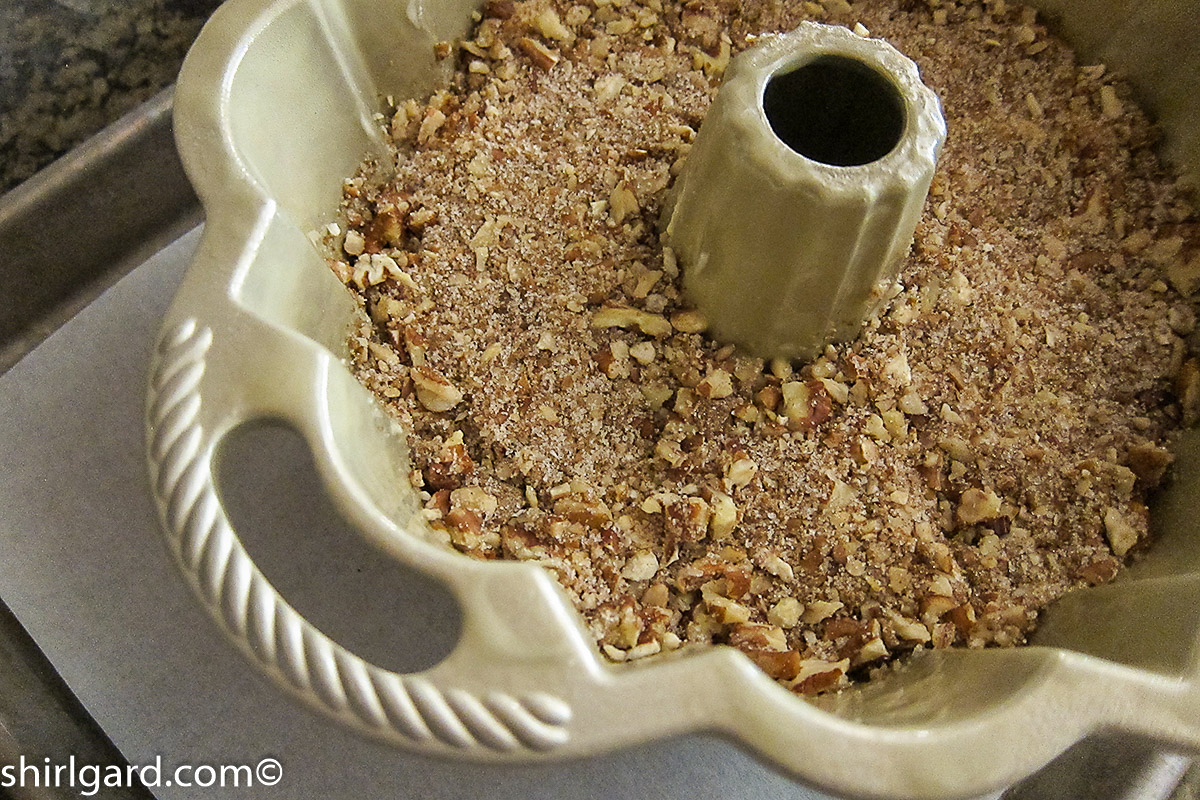
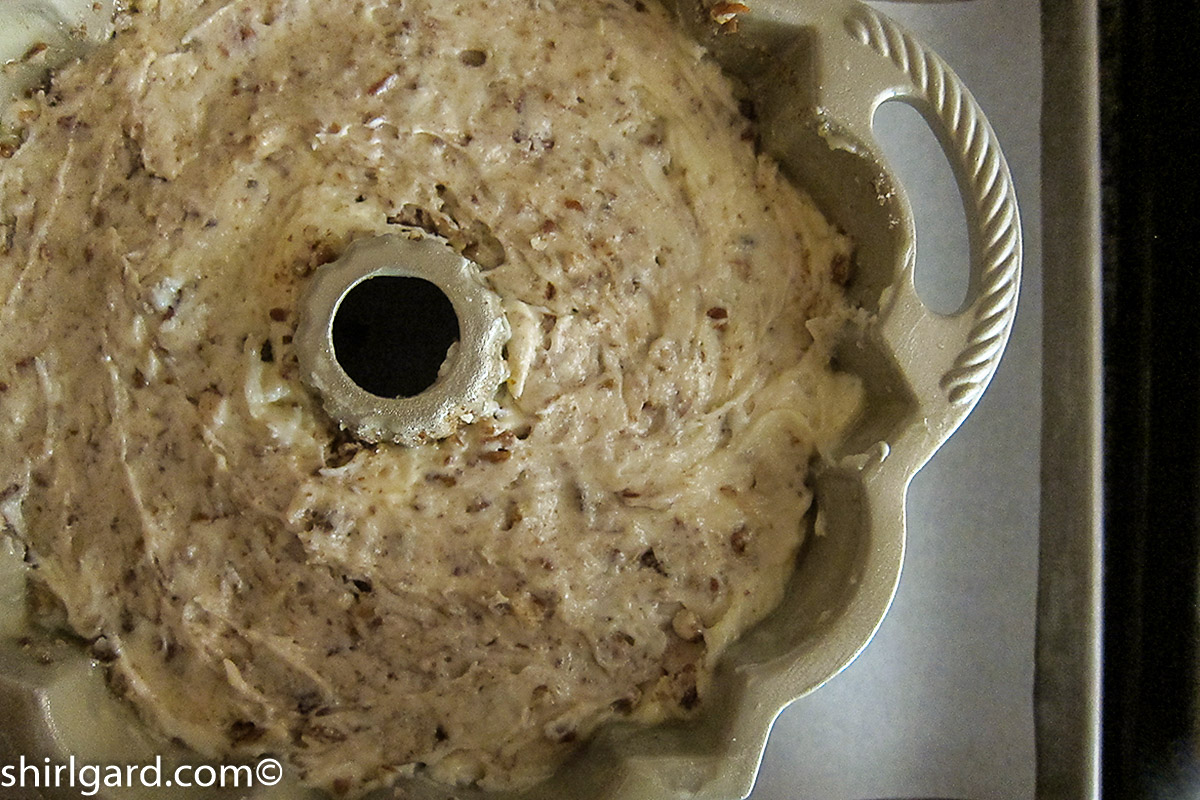
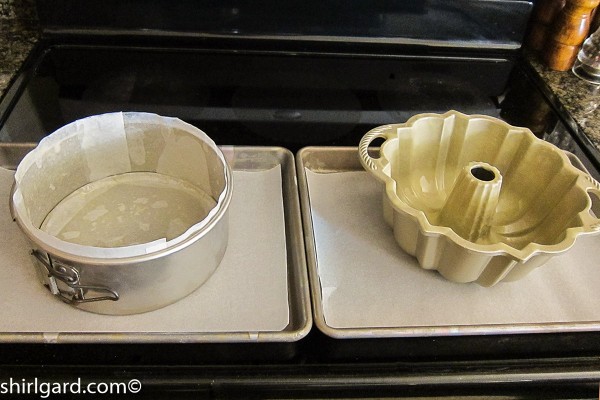
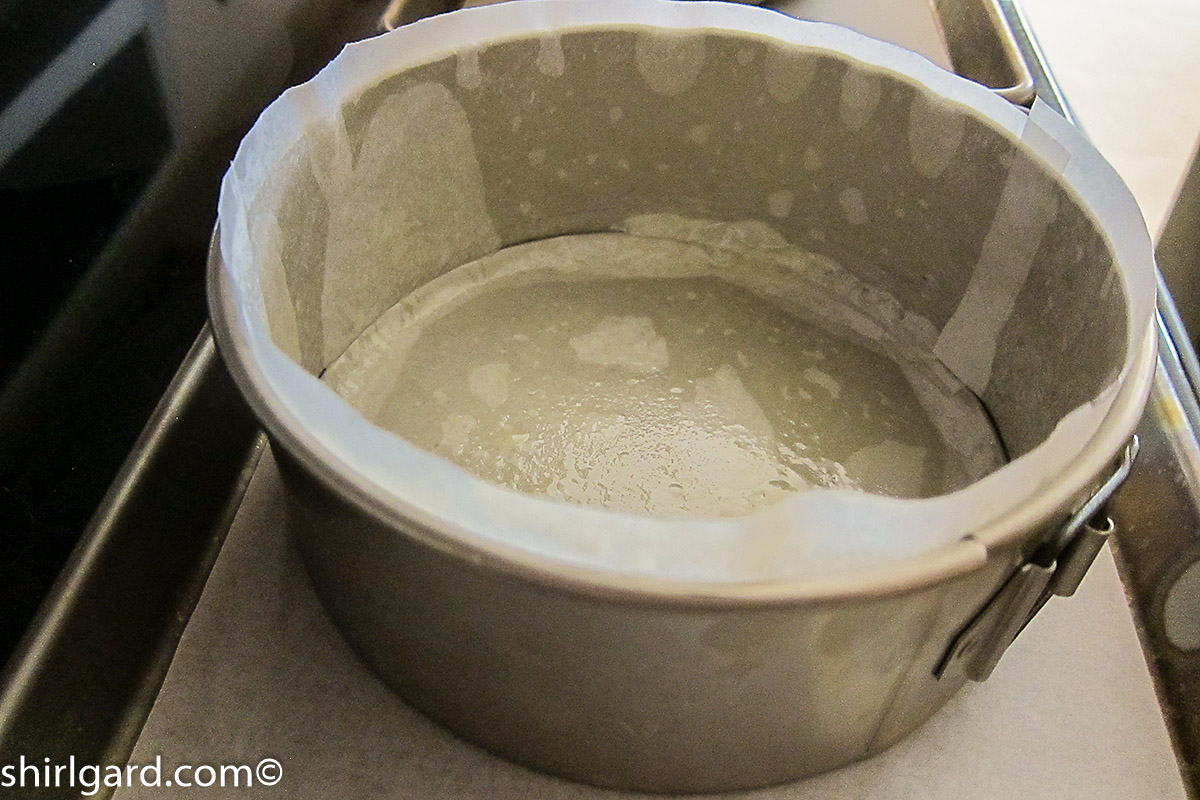
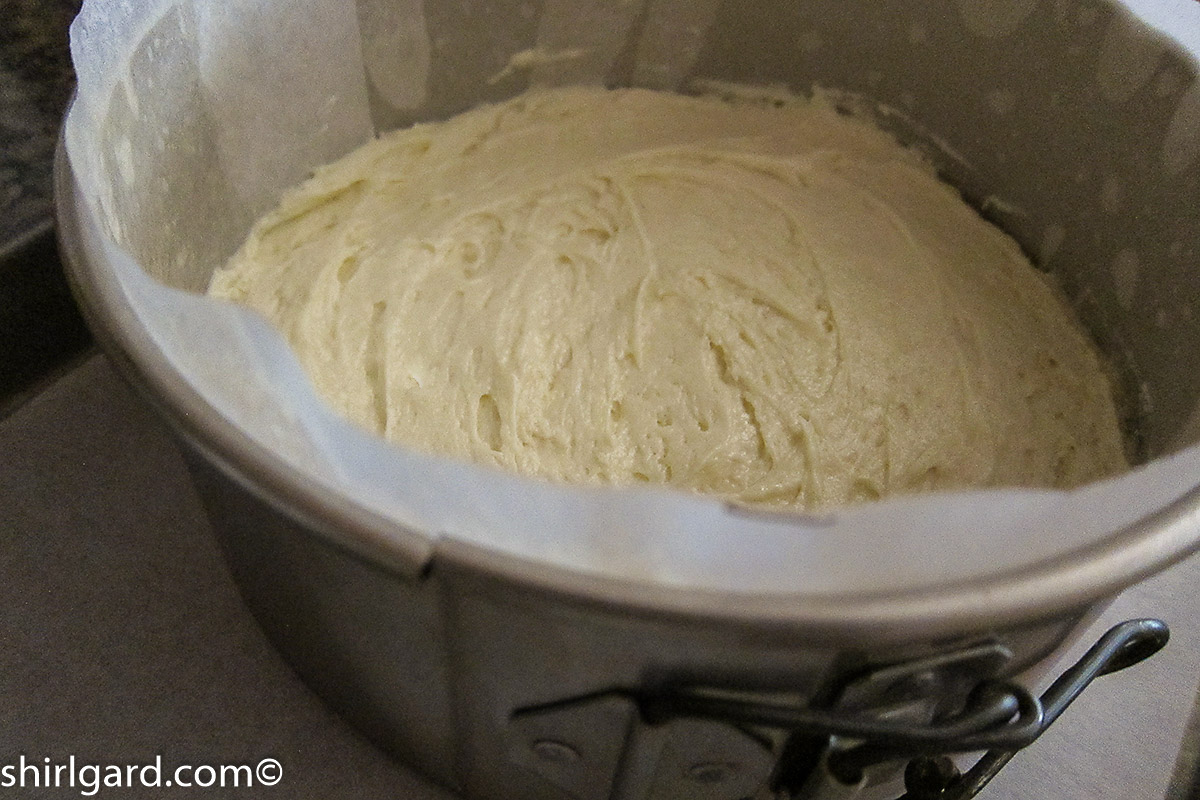

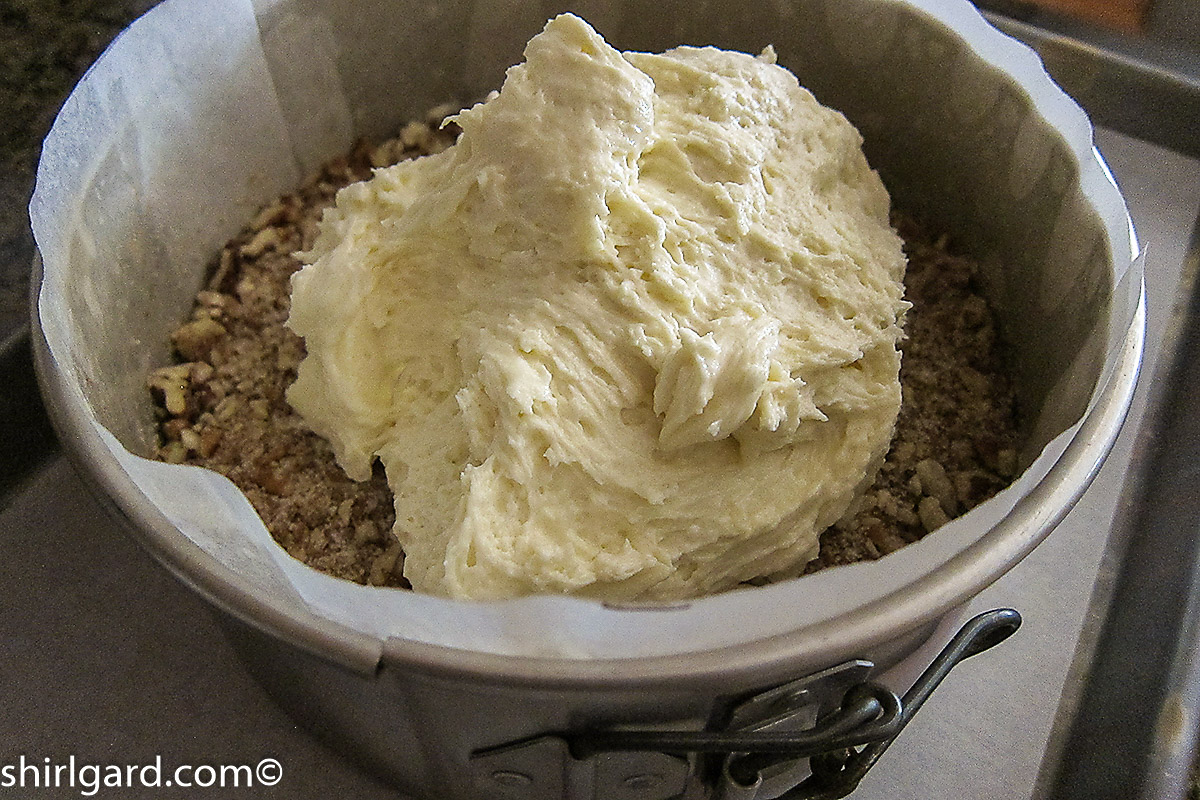
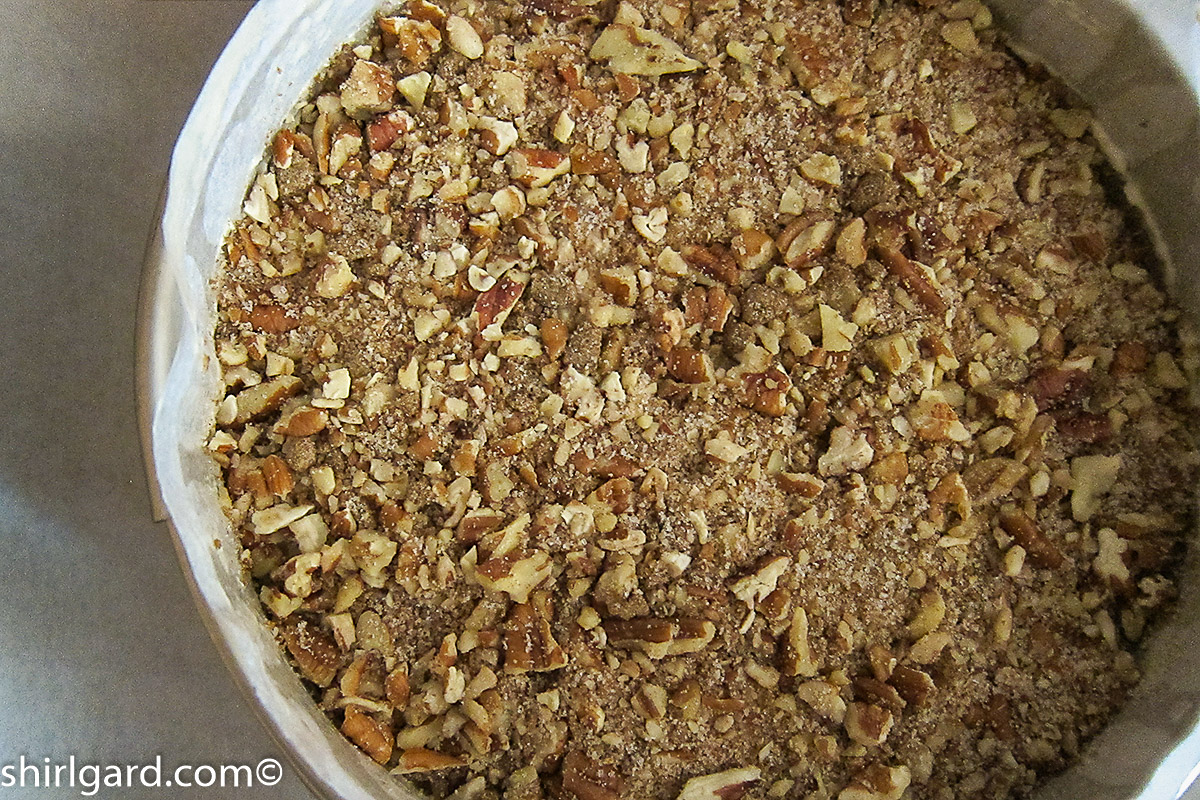
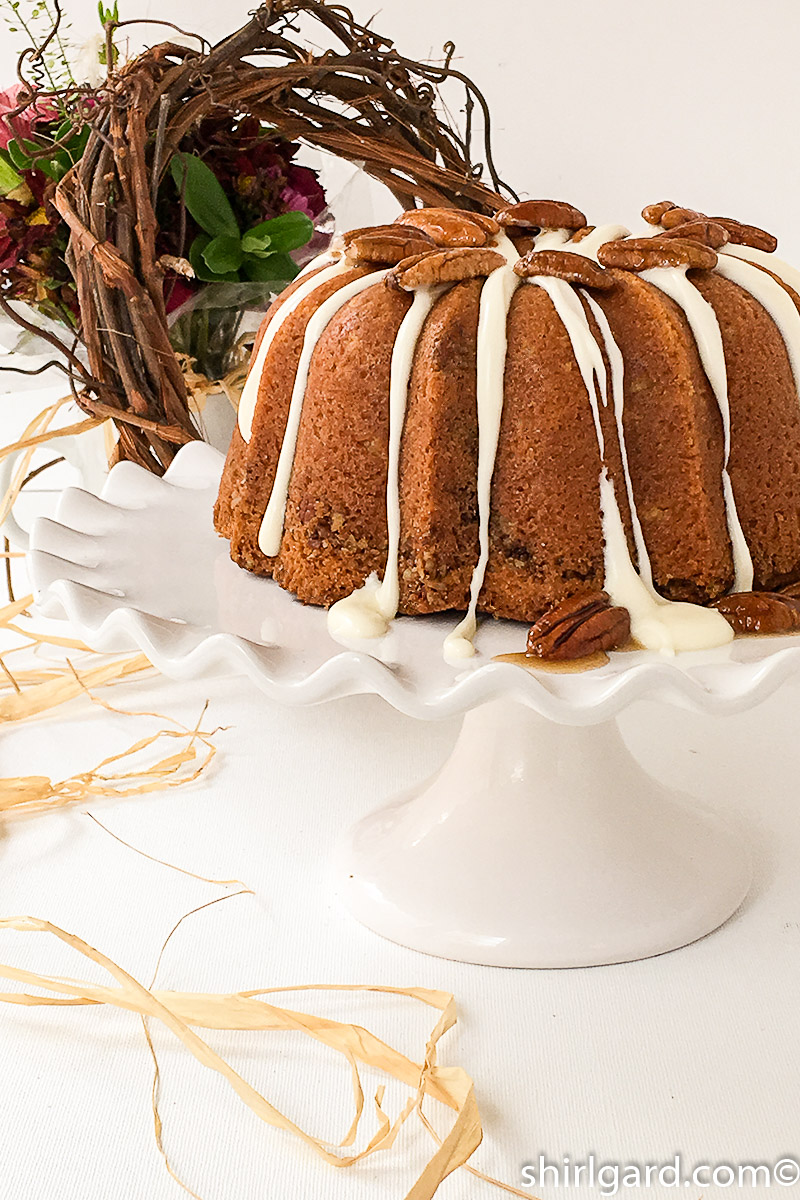
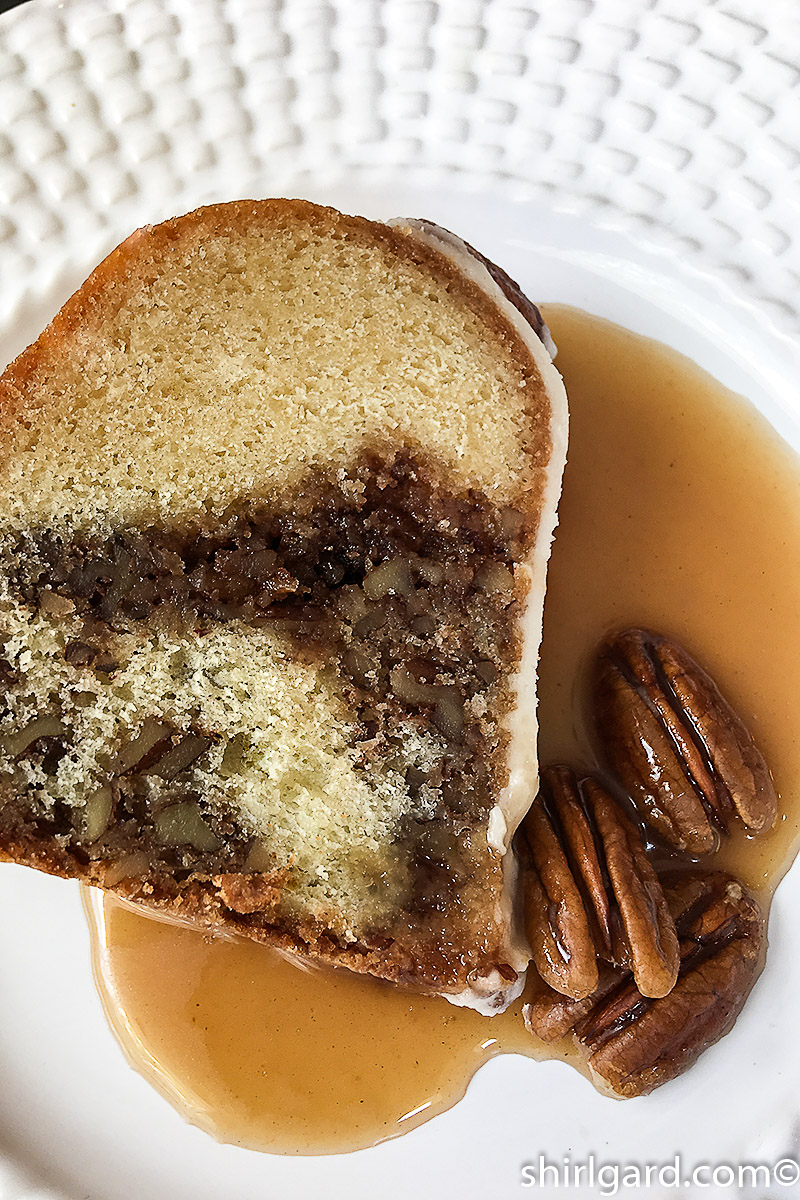
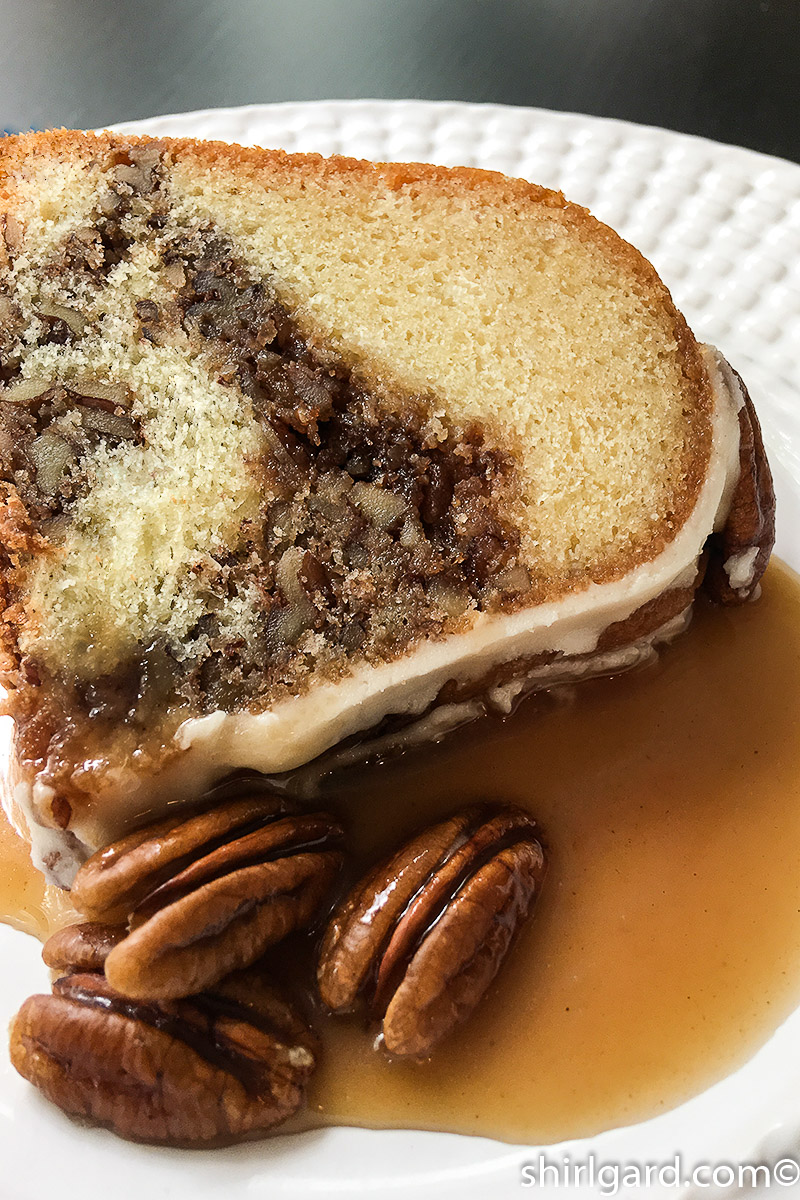
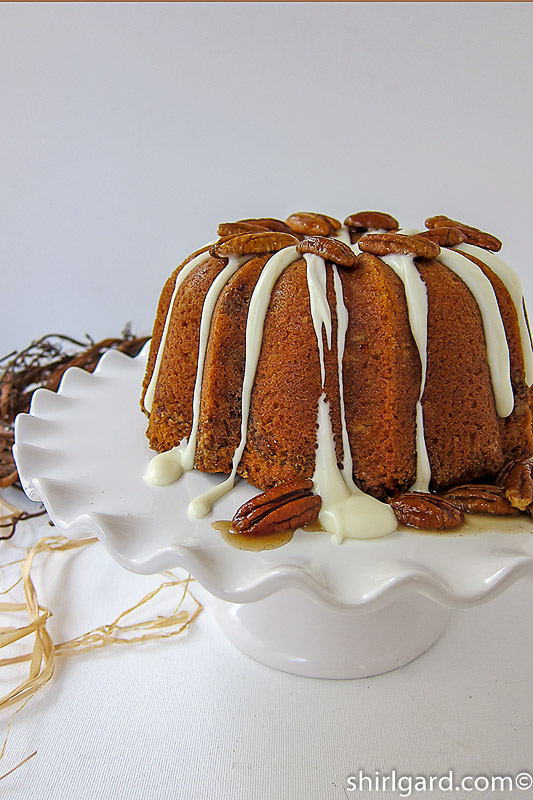
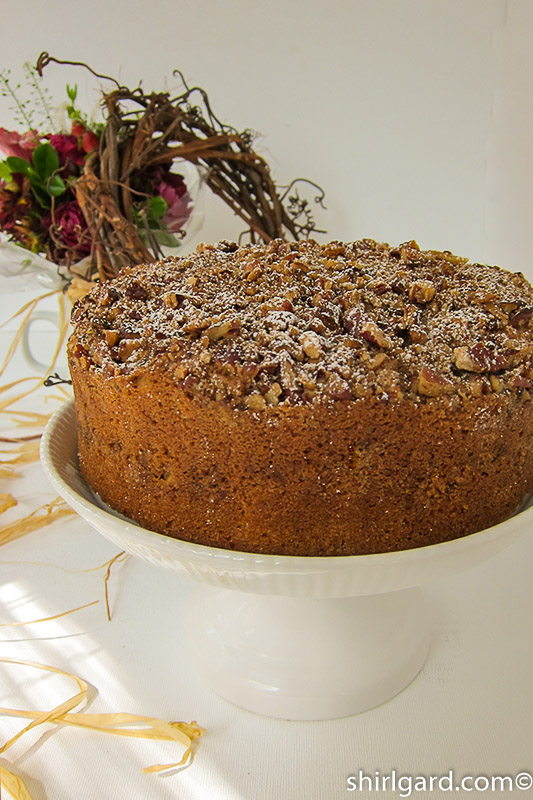
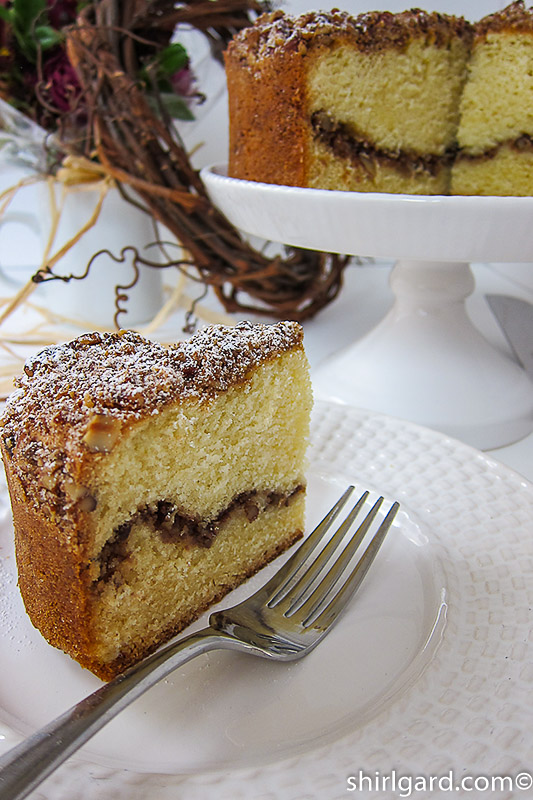
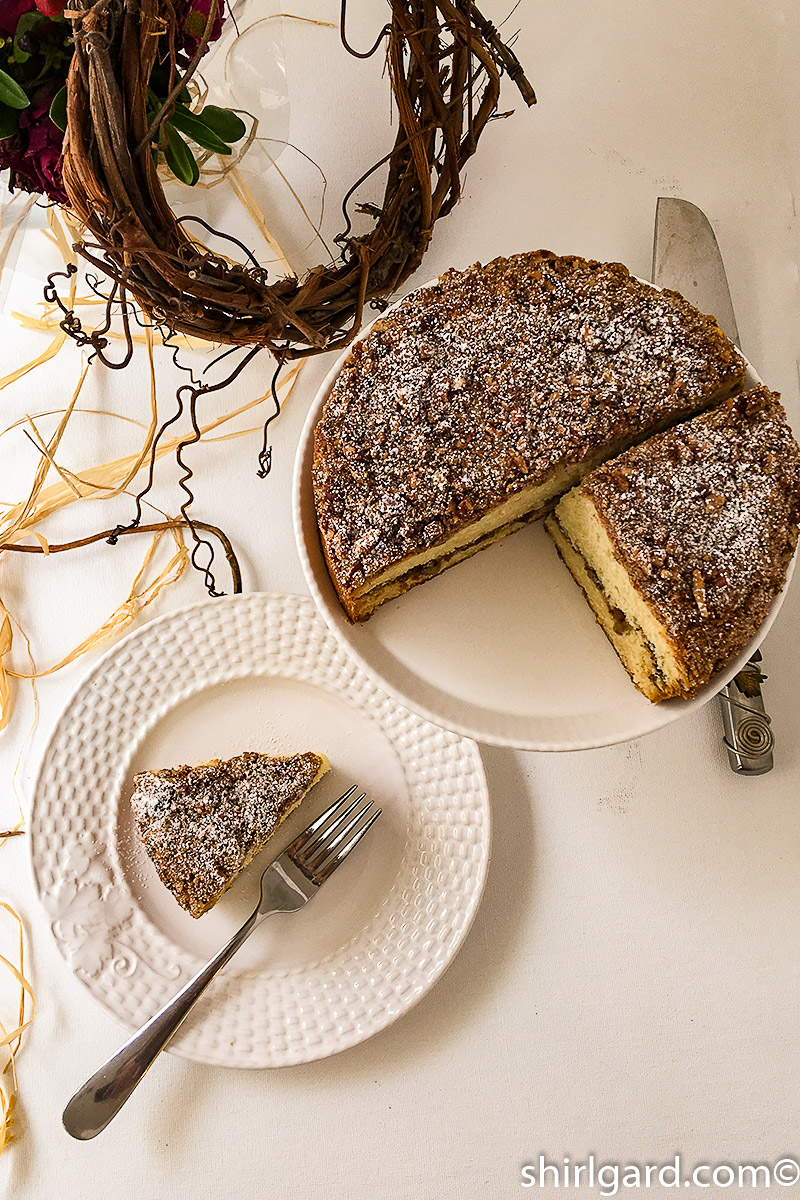
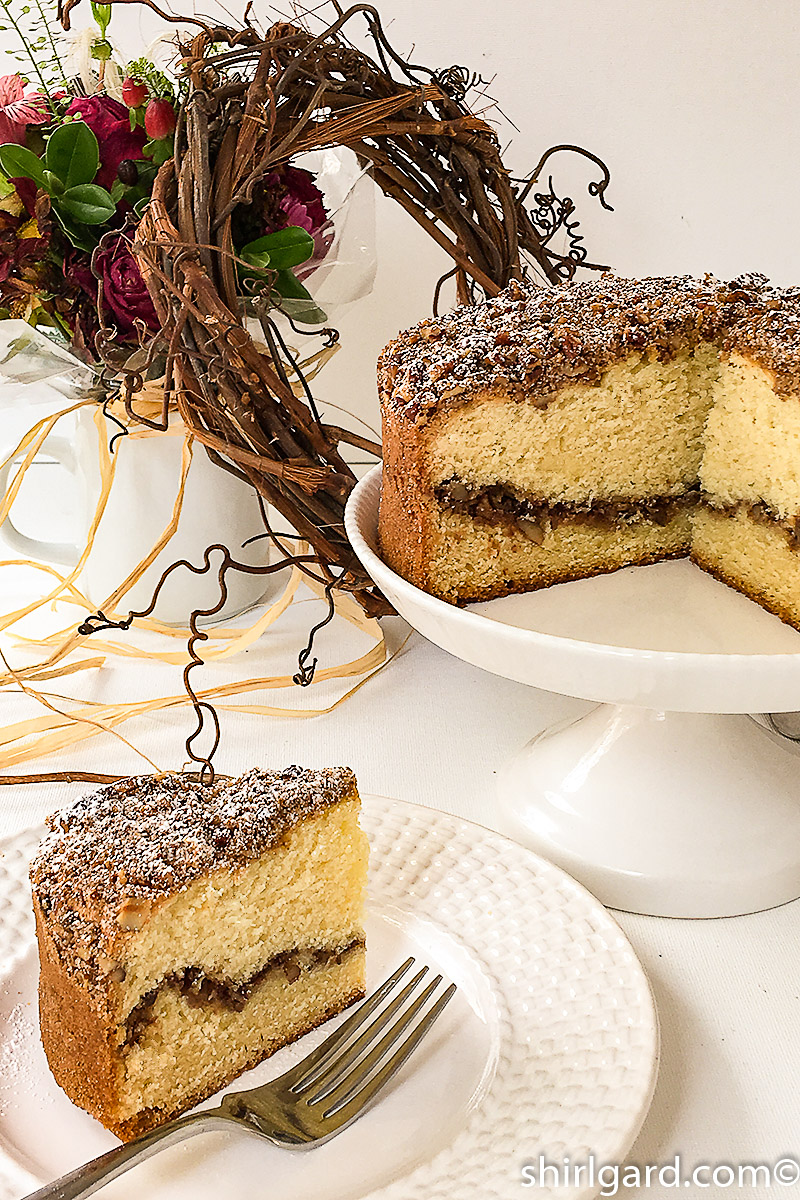

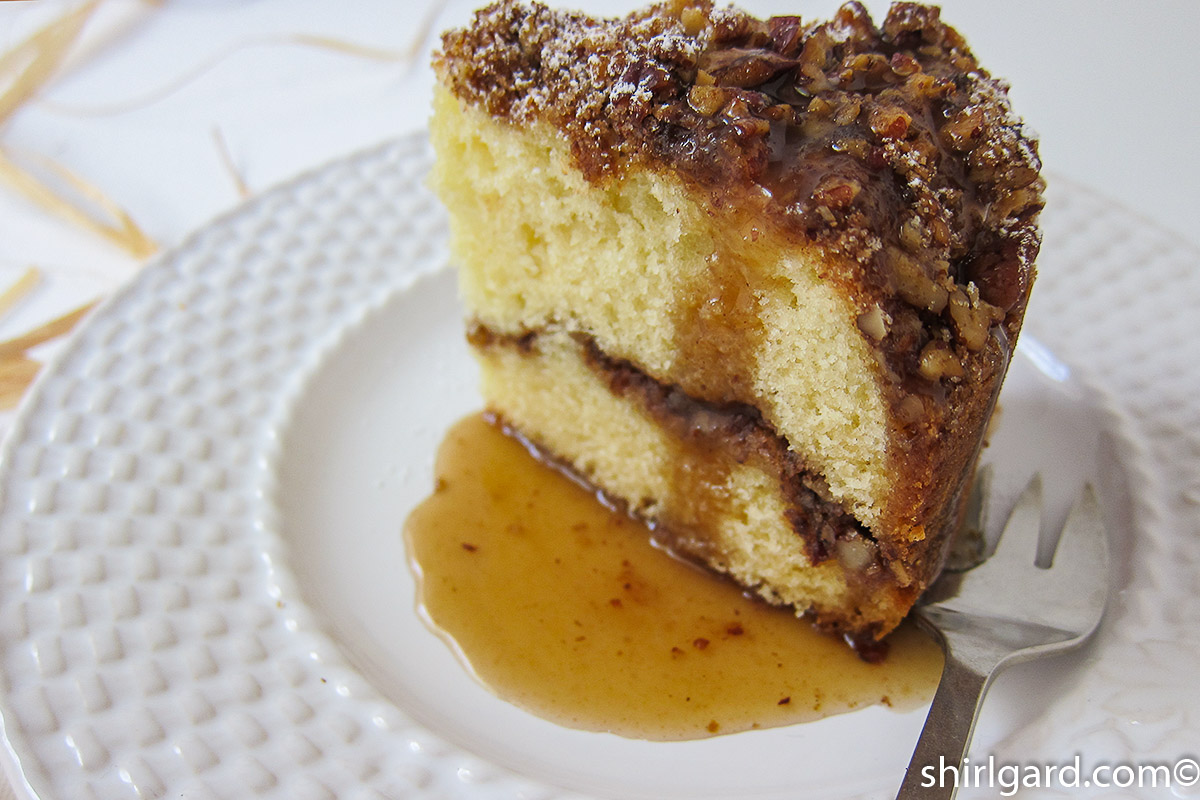
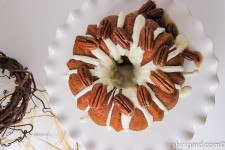
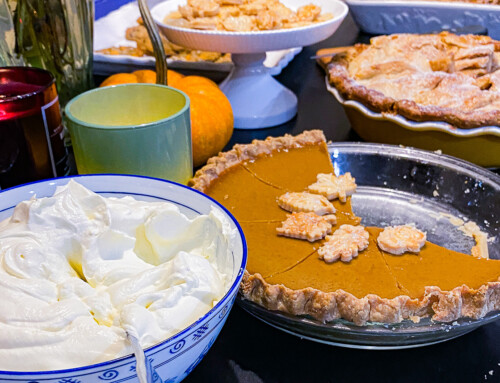
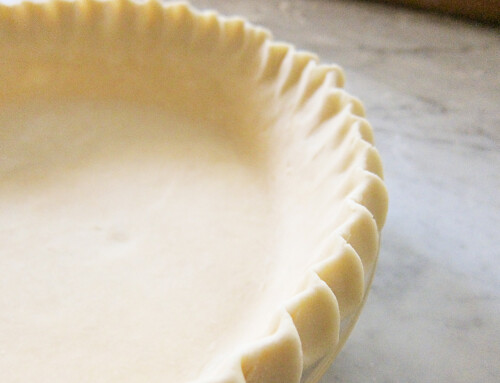
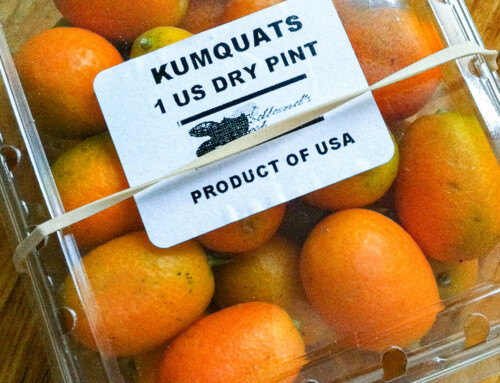
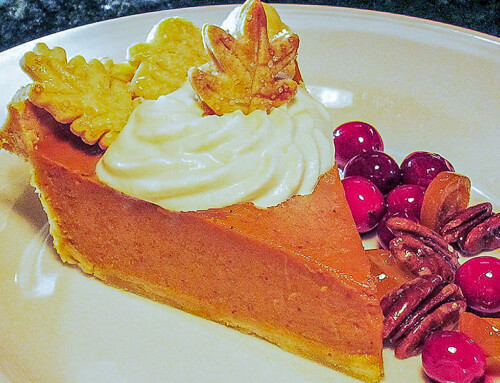
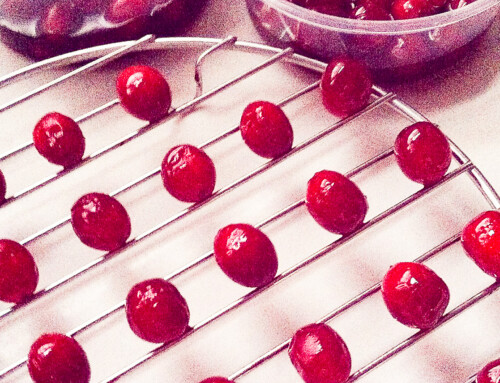
I have to start off by acknowledging you for the incredible photography… I had a physical reaction… my stomach literally started growling as if to say, “Girl, what are you waiting for? Bake that Bundt Cake and feed it to me!” What I also love about your blog is how much I learn. I had no idea there was a method for filling a Bundt Pan. You really go the extra mile with teaching. I’m fortunate enough to have experienced an in-person taste test of your 4 different cinnamons and it was eye-opening as well as tongue-telling. I always assumed all cinnamon was the same. Your taste test proved me wrong. It’s great to know the difference between the options and where each one has a place.
Thanks Jessica, for the encouraging comments. I especially appreciate what you had to say about my photography. I’m trying so hard to be a good food photographer, hoping to get a gig sometime in the future.
Also, I have the hardest time trying to keep my posts short like LA wants, because I keep thinking of more information that I need to tell people about whatever the topic is. Anyway, thanks so much.
Wow, Shirl. That came out great. And look, I”m able to leave a comment! You better bring one of those next week, LOL. Better not, management might make a stink. Better yet, let’s party at your house. I see I’m the villain about keeping posts short and sweet, but they are better. Once people see the photos they want to rush to the pantry and start baking. Kudos. Keep up the good work.
Thanks LA, for the positive comments. Not the villain, the enforcer for out-of-control blog posts. I’d be happy to have the group at my house sometime, if people would want to drive to Wellington. Thanks again.